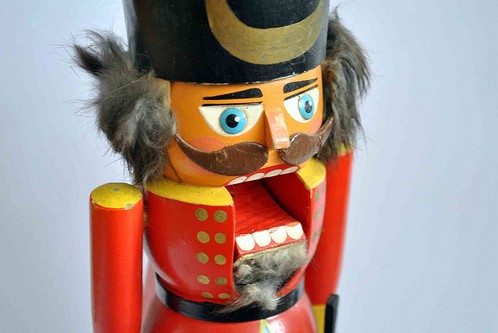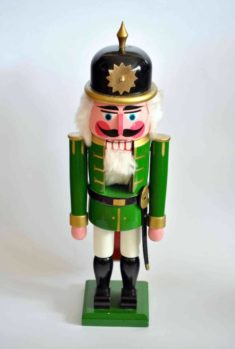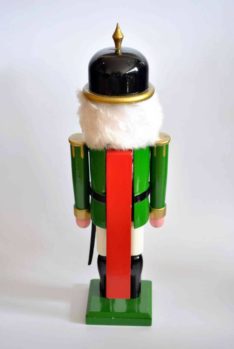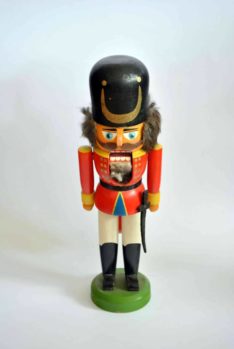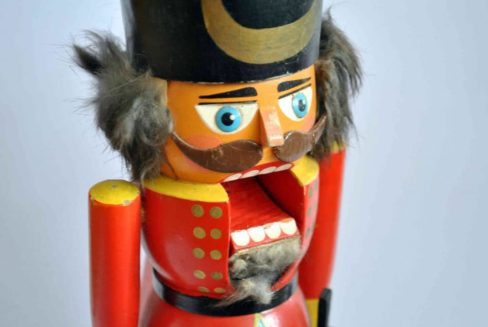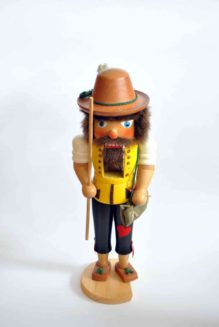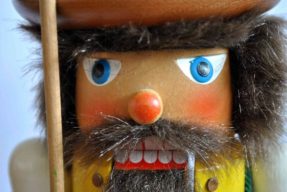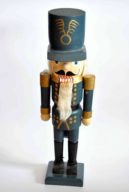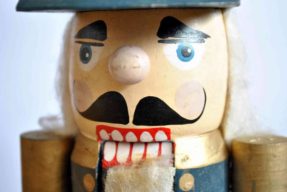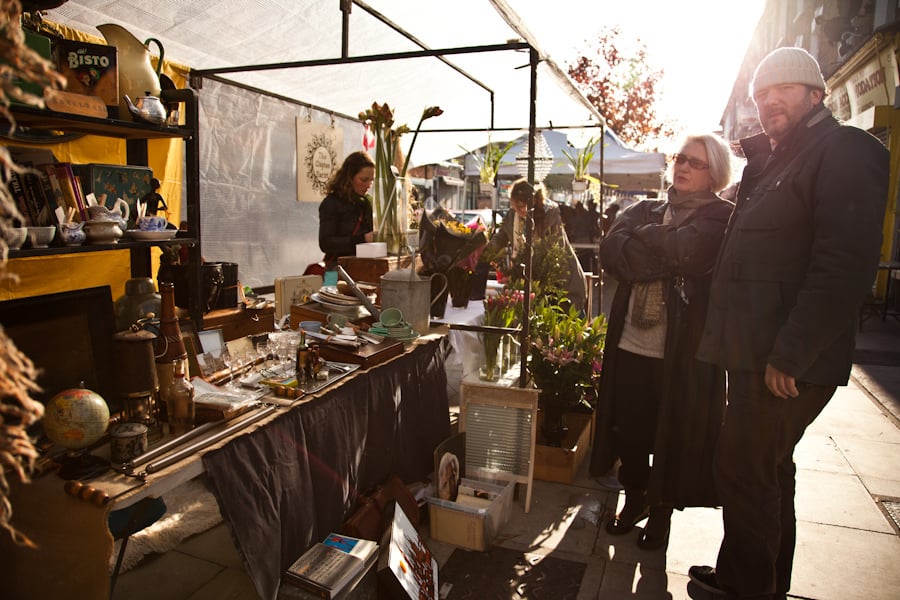You’ve probably already heard of Nutcrackers. Should it be because you were told as a child the story of “The Nutcracker and the Mouse King” by E.T.A. Hoffmann, had a chance to go to the opera to see Pyotr Ilyich Tchaikovsky‘s ballet “The Nutcracker” or because once as an underage drinker, you tried this namesake cocktail made of juice mixed with vodka.
But nutcrackers are also some endearing objects, some people even dedicate their life to. Here is a short story of where they come from.
Nutcrackers in the form of wooden carvings of a soldier, knight, king, or other profession have existed since at least the 15th century. These nutcrackers portray a person with a large mouth which the operator opens by lifting a lever in the back of the figurine. Originally one could insert a nut in the big-toothed mouth, press down and thereby crack the nut. Modern nutcrackers in this style serve mostly for decoration, mainly at Christmas time. The ballet The Nutcracker derives its name from this festive holiday decoration.
(the above photo series depicts three nutcrackers “salvaged” from a flea market in Upper Austria – price: 1€ each)
The carving of nutcrackers—as well as of religious figures and of cribs—developed as a cottage industry in forested rural areas of Germany. The most famous nutcracker carvings come from Sonneberg in Thuringia (also a center of dollmaking) and from the Ore Mountains. Wood-carving usually provided the only income for the people living there. Today the travel industry supplements their income by bringing visitors to the remote areas.
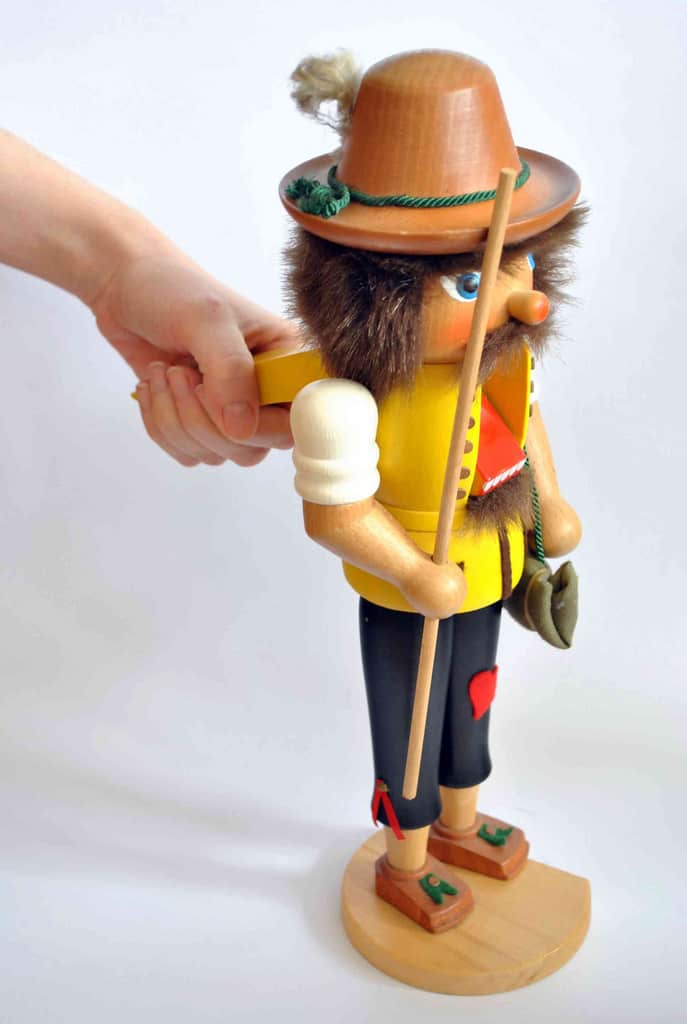
nutcracker “salvaged” from a flea market in Upper Austria – price tag: 1€
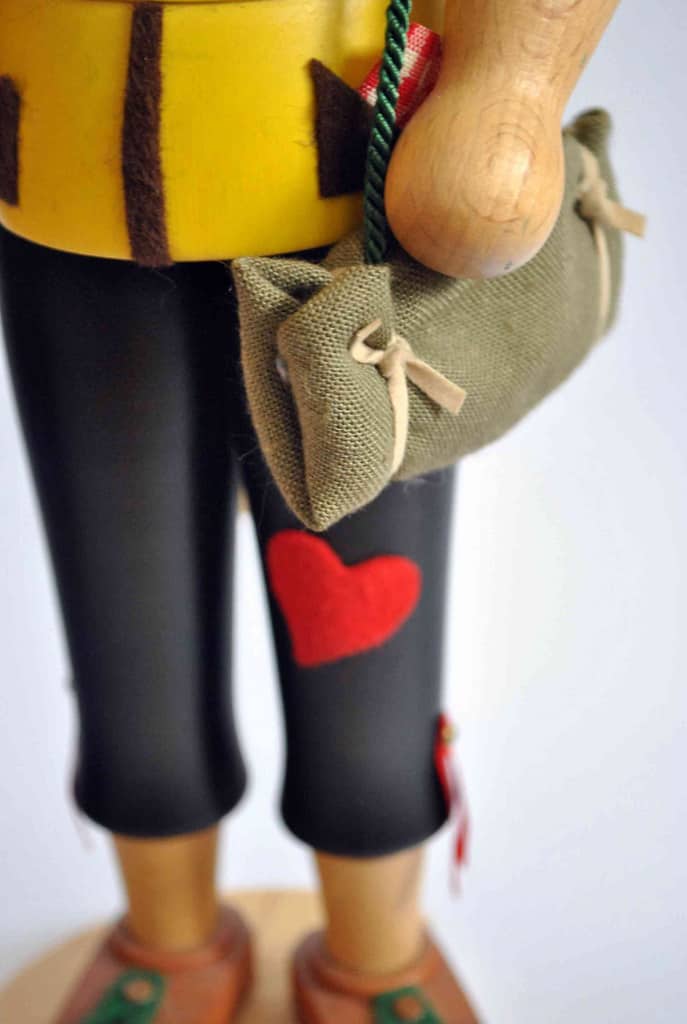
This nutcracker is beautifully detailed, while keeping with the “nutcracker tradition”
Steinbach Nutcrackers have become popular in the United States as well, and the recreated “Bavarian village” of Leavenworth, Washington, even features a nutcracker museum. Many other materials also serve to make decorated nutcrackers, such as porcelain, silver, and brass; the museum displays samples.
Carvings by famous names like Junghanel, Klaus Mertens, Karl, Olaf Kolbe, Petersen, Christian Ulbricht and especially the Steinbach nutcrackers have become collectors‘ items.
The United States Postal Service (USPS) in October 2008 issued four stamps with Nutcrackers for the first time. These featured custom-made Nutcrackers made by Richmond, Virginia, artist Glenn Crider.
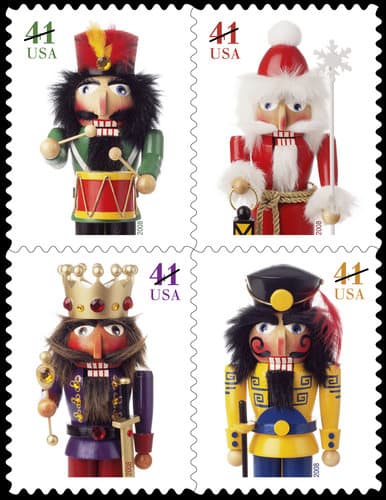
source: Wikipedia
External Links:

